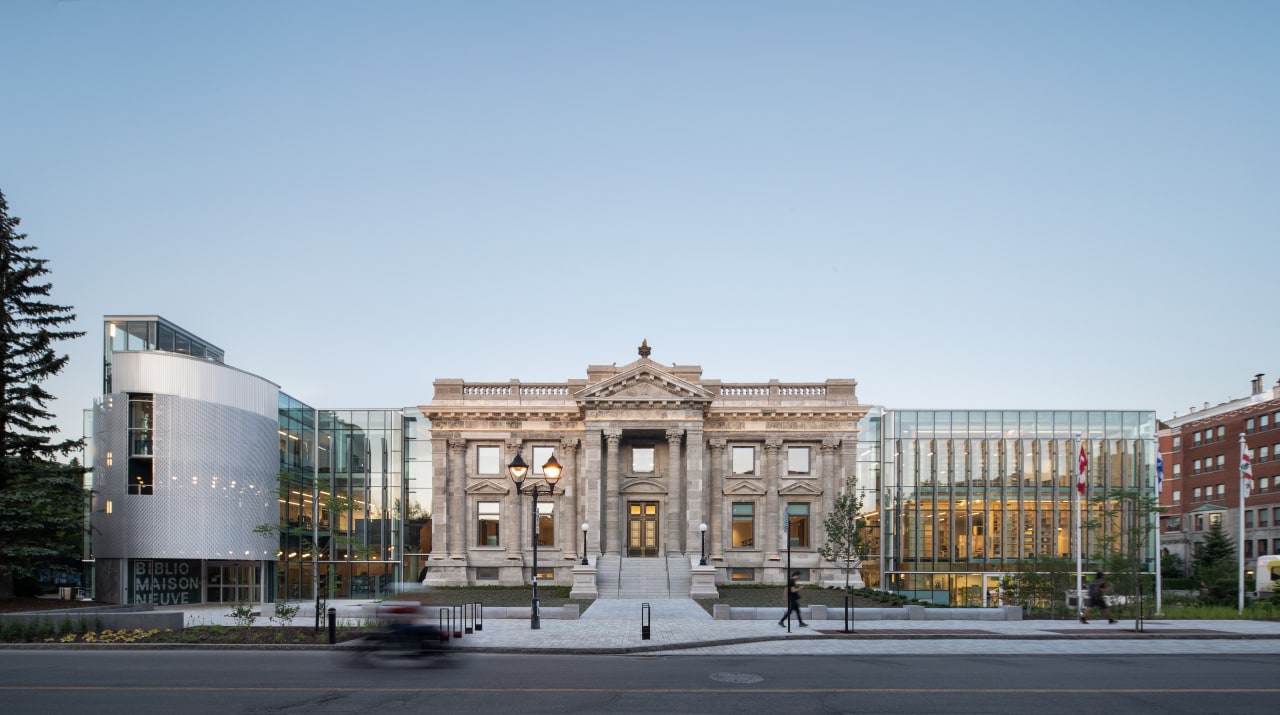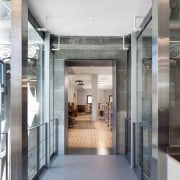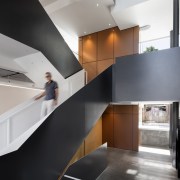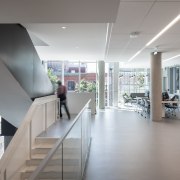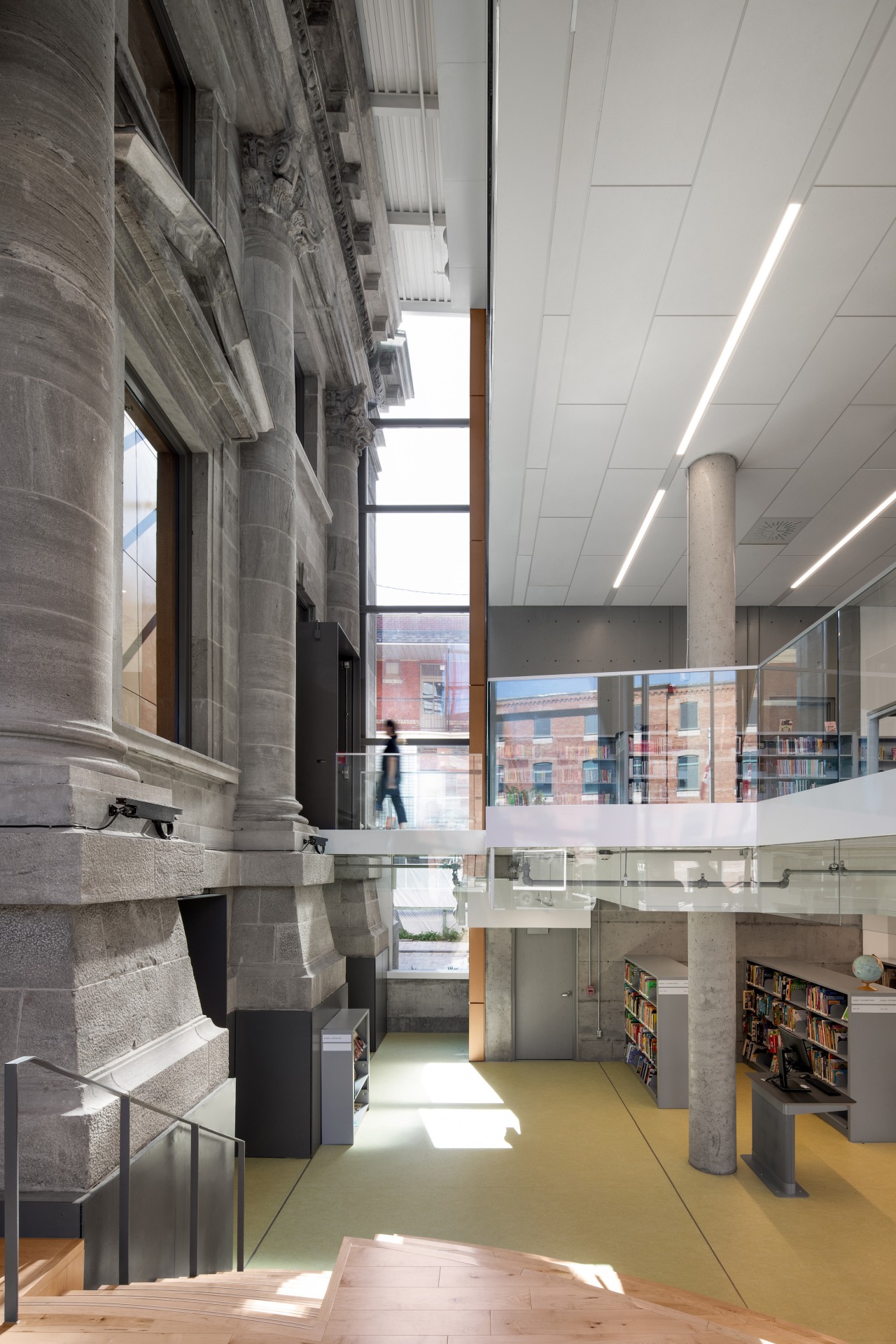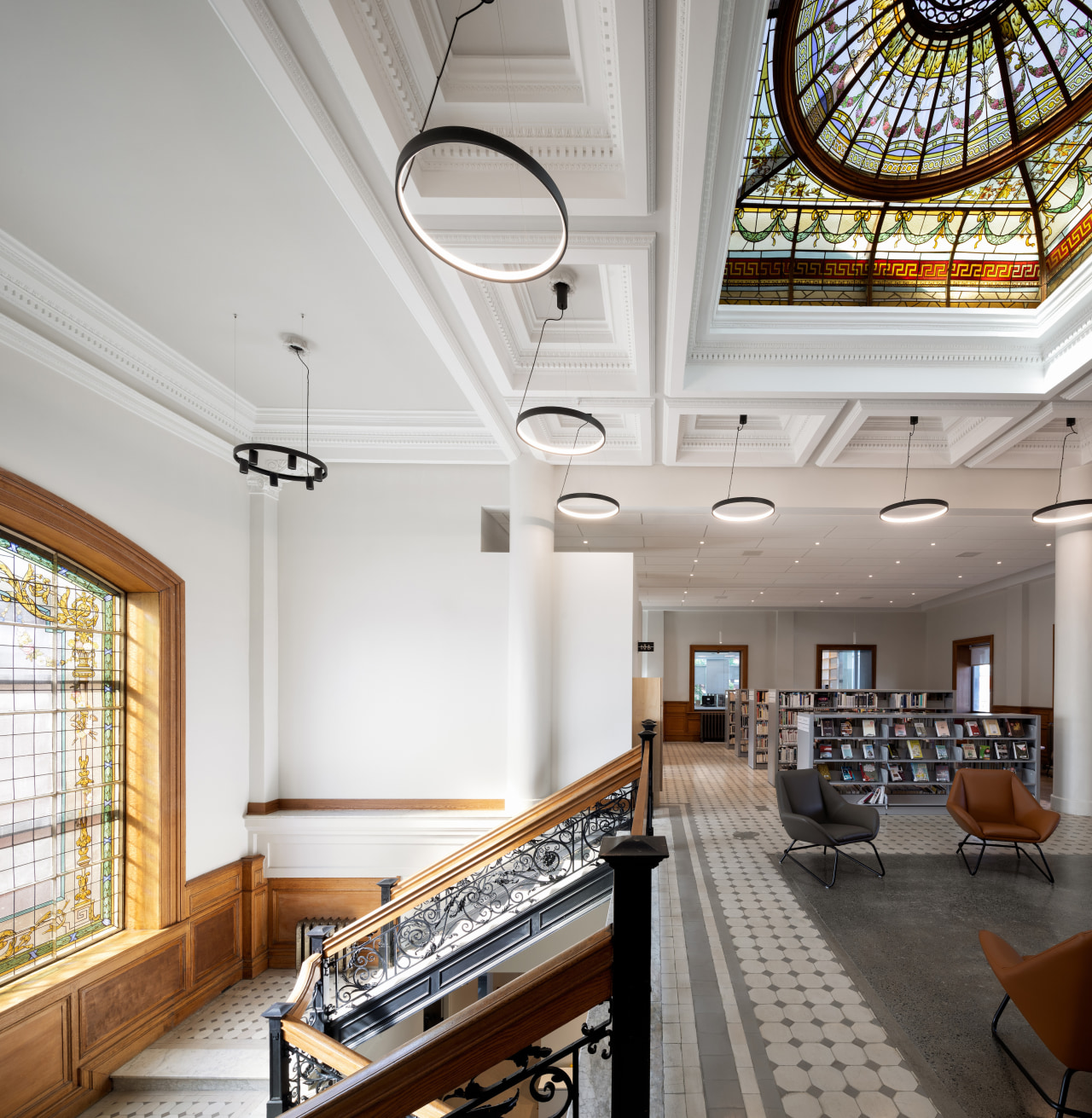A beautiful dance between eras
This sensitive library renovation and expansion by EVOQ celebrates the facility's past while addressing its modern role as a social hub
Renovation and expansion by EVOQ Architecture
From the architects:
The City of Montreal is renowned for its thriving cultural scene and rich architectural heritage.
What visitors often miss, however, is the gentle, yet radical transformation occurring in pedestrian-friendly neighbourhoods away from downtown.
For the past 20 years, urban designers have been busy redefining street life, architects were building – or remodelling – numerous public amenities such as theatres, sports facilities, and libraries.
One striking example of this transformative process is the Maisonneuve Library, housed since 1981 in what once was a small, but prestigious city hall for the short-lived City of Maisonneuve.
As the need to upgrade and expand the facility became more and more pressing, Montreal launched a multidisciplinary design competition in 2017.
The winning team was a consortium of Montreal firms led by EVOQ Architecture and Dan Hanganu Architects (now part of EVOQ).
A major transformation
The now carefully restored 1912 building, with its glazed extensions, illustrates how the past can enrich the present, and vice versa.
It was highly praised by the Québec association of librarians and archivists, Fédération des milieux documentaires, which selected the Maisonneuve Library as the winner of its 2023 Architecture Award.
This recognition takes on particular value coming from the very professionals who, on a daily basis, are in close contact with libraries and their patrons.
The book-centred archetype, which dictated the layout of libraries through most of the 20th century, no longer prevails, as recent libraries have taken on a new role and often act as social hubs in their respective communities.
The Maisonneuve branch is no exception.
Its transformation, which allowed it to expand from 1,240 to 3,594m², provided it with an opportunity to reinvent itself and meet the needs of a more inclusive and constantly evolving society.
One of the most important decisions taken by the architectural team was to rehabilitate the historic building and bring it back to its original splendour.
The stone façades and the monumental doors were carefully restored, as were the original plaster mouldings, wood panelling, and mosaic floors.
The piano nobile’s (main floor) marble staircase, and its two imposing stained-glass features, were carefully repaired.
The alignment of the new curtain wall and the rhythm of its brise-soleil were dictated by the historic building’s neo-classical colonnade.
Key to the design concept was the introduction of a 'tower' element off the east wing.
A clear statement of the library’s contemporary identity, this contains a new vertical circulation core and serves as the library’s main entrance.
Users with reduced mobility can easily enter the premises and reach the elevator, giving them full access to each floor, as well as access to a small roof terrace.
The exterior stone steps no longer serve their initial function, except for rare occasions like ceremonial events.
They mostly provide exterior seating for users and passers-by.
Another move, which reflects the architects’ preoccupation with heritage issues, was to leave a full-height void on either side of the former city hall as a constant reminder to users of what was once there.
Stunning views of the imposing columns are provided as users make their way through the building.
Steel portals and spatial voids emphasise the transition from the light-filled contemporary wings to the more subdued ambiance of the original structure.
A library for everyone
The reception area, directly accessible from the street, acts as an orientation device for the library’s different audiences.
Young children are led down towards a succession of playful spaces, while teenagers head upwards to the second level, where a variety of creative amenities such as a medialab, an animation studio, and a small video games room await them.
The upper two floors of the former city hall – as well as the west wing’s top level – serve a clientele looking for quiet reading and study areas.
A partly cantilevered ‘silent room’, is aligned with nearby traditional balconies, overlooking Pie-IX Boulevard.
As one approaches the west wing from the outside, an intriguing set of open bookshelves attracts attention.
This live-in modular environment was designed to respond to children’s desire for adventure.
A sustainable building
A collaborative approach ensured the delivery of a sustainable building and site.
Professionals involved in this project complied with current standards of sustainable practice, including those pertaining to the protection of cultural diversity and biodiversity.
Highly efficient electromechanical systems were introduced to maximise thermal comfort, while keeping energy consumption at a minimum.
Geothermal energy was a key factor in providing for the library’s heating and cooling needs.
The addition of radiant floors further ensured the comfort of library patrons.
Various other low energy devices were integrated in the project.
The curtain wall system, designed with integrated solar protection, effective thermal breaks, and low-emissivity thermal glazing units, greatly contributes to reaching optimal performance.
An application has been filed to obtain LEED Gold accreditation.
The neighbourhood
The Maisonneuve Library is located on Ontario Street, an east-west axis which has undergone a radical transformation over the last decade.
Still standing are a few early 20th century buildings, such as the former Maisonneuve Market, inspired by the City Beautiful movement.
Today, distinctive paving subtly signals the presence of these memorable buildings and is an invitation to discover them.
The integration of the new library into this historically significant district was entrusted to Civiliti, an urban design firm that formed part of the initial consortium.
They designed a series of urban and landscape interventions, establishing seamless links between the library’s private grounds and the public domain.
A public art sculpture by artist Clément de Gaulejac was installed in a playful court directly accessible from the children’s activity room.
It stands quietly as a reminder of another era.
Many professionals contributed to this project, as did remarkable artisans, without whom it would have been impossible to restore the beauty of the old city hall.
A statement from the competition jury report perhaps best reflects the spirit of the new Maisonneuve Library, describing it as “a beautiful dance between eras, between exterior and interior, and between active and contemplative”.
Credit list
Project
Architect
Landscape architects
Structure
Mechanical and electrical
Elevator specialists
Commissioning
Ergonomics
Sustainability
Metal, historical doors
Ornamental plasterers
Conservator, masonry
Stained glass
Owner
Architect historic building
Envelope
Civil
Envelope, quality control
Furniture, signage and multimedia
Lighting
Acoustics
Mosaic
Masonry
Stone cutter
Artist, public art
Home kitchen bathroom commercial design
Connected to the ocean
Contrast and connection
At one with the Amazon
